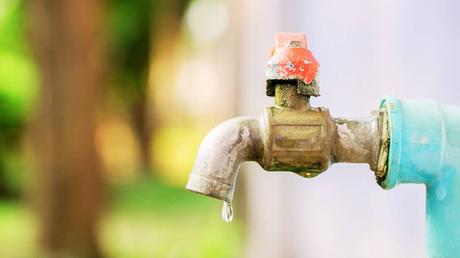
Last Updated on July 8, 2024 by Kravelv
Outdoor water faucets, also known as spigots or hose bibs, are essential components of any home's exterior plumbing system. They provide a convenient source of water for gardening, washing cars, and other outdoor activities. However, these faucets are often exposed to harsh weather conditions and heavy use, which can lead to various problems. This guide will explore common issues with outdoor water faucets, their causes, and detailed solutions for each.
Key Takeaways:1. Leaking Faucet
Leaking is one of the most common outdoor faucet problems. This can waste a significant amount of water and lead to higher utility bills.
Causes: Solutions: Replace the Washer:- Turn off the water supply.
- Remove the handle by unscrewing the retaining screw.
- Unscrew the packing nut and remove the valve stem.
- Replace the washer at the bottom of the valve stem.
- Reassemble the faucet and turn on the water supply to check for leaks.
- Sometimes, a simple tightening of the packing nut can stop the leak.
- Use a wrench to gently tighten the nut without over-tightening.
2. Low Water Pressure
Low water pressure can be frustrating when trying to water plants or wash outdoor surfaces.
Causes: Solutions: Clean the Aerator or Spout: Flush the Pipes: Check the Shut-Off Valve:- Ensure the shut-off valve is fully open.
- If it's partially closed, open it fully to restore water pressure.
- Check the pipes for any visible leaks.
- Repair any leaks found by patching or replacing the damaged section.
3. Faucet Freezing
In colder climates, outdoor faucets can freeze, leading to burst pipes and significant water damage.
Causes: Solutions: Install a Frost-Free Faucet:- Replace the standard faucet with a frost-free model.
- This type of faucet extends the valve seat inside the house where it's warmer.
- Use pipe insulation or heat tape to protect exposed pipes.
- Ensure the insulation covers the pipe from the faucet to the interior wall.
4. Handle Problems
A loose or broken handle can make it difficult to turn the faucet on or off.
Causes: Solutions: Tighten the Handle Screw:- Use a screwdriver to tighten the handle screw.
- Ensure it's secure but not over-tightened.
- Remove the old handle by unscrewing the handle screw.
- Replace it with a new handle and secure it with the screw.
5. Corrosion
Corrosion can damage the faucet, leading to leaks and reduced functionality.
Causes:- Exposure to harsh weather conditions
- Poor-quality materials
- Mineral buildup
- If corrosion is severe, replace the damaged parts or the entire faucet.
- Choose high-quality materials like brass or stainless steel to prevent future corrosion.
6. Spout Issues
Water dripping or spraying from the spout can indicate underlying problems.
Causes: Solutions: Inspect and Clean the Spout:- Remove the spout and check for debris.
- Clean it thoroughly and reattach.
- Follow the steps for replacing the washer or O-ring as mentioned earlier.
- If the spout itself is damaged, replace it with a new one.
- Ensure the new spout is compatible with your faucet model.
Preventive Maintenance Tips
-
Regular Inspection:
- Periodically check your outdoor faucets for leaks, corrosion, and other issues.
- Address any problems promptly to prevent further damage.
-
Seasonal Maintenance:
- Before winter, drain and insulate your outdoor faucets to prevent freezing.
- In the spring, check for any damage caused by freezing and thawing.
-
Quality Materials:
- Invest in high-quality faucets and parts to reduce the risk of corrosion and wear.
- Use brass, stainless steel, or other durable materials.
-
Proper Use:
- Avoid excessive force when turning the faucet on or off.
- Use a hose bib vacuum breaker to prevent backflow and protect the faucet.
Final Words
By understanding common outdoor water faucet problems and their solutions, you can maintain a functional and efficient outdoor water supply. Regular maintenance and timely repairs will help extend the lifespan of your faucets and ensure a steady flow of water for all your outdoor needs.
